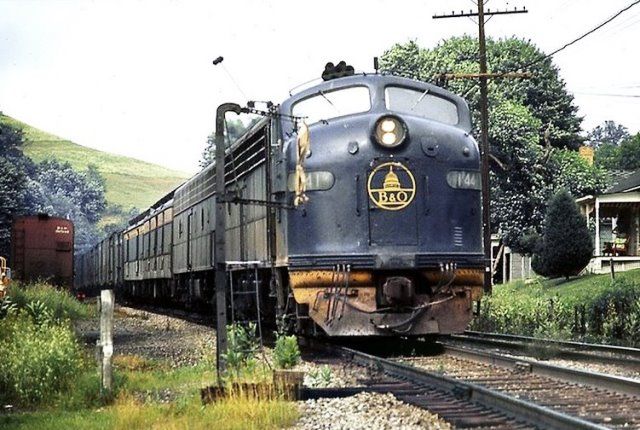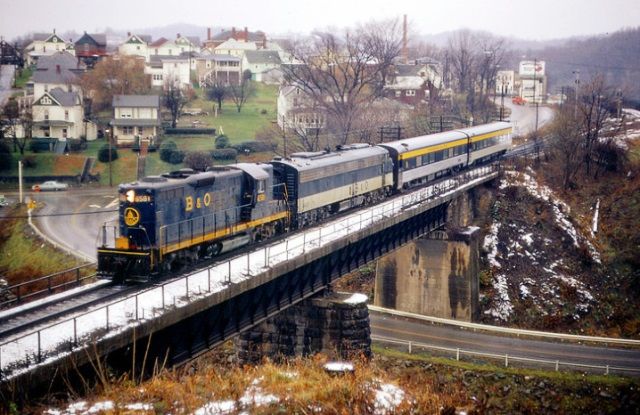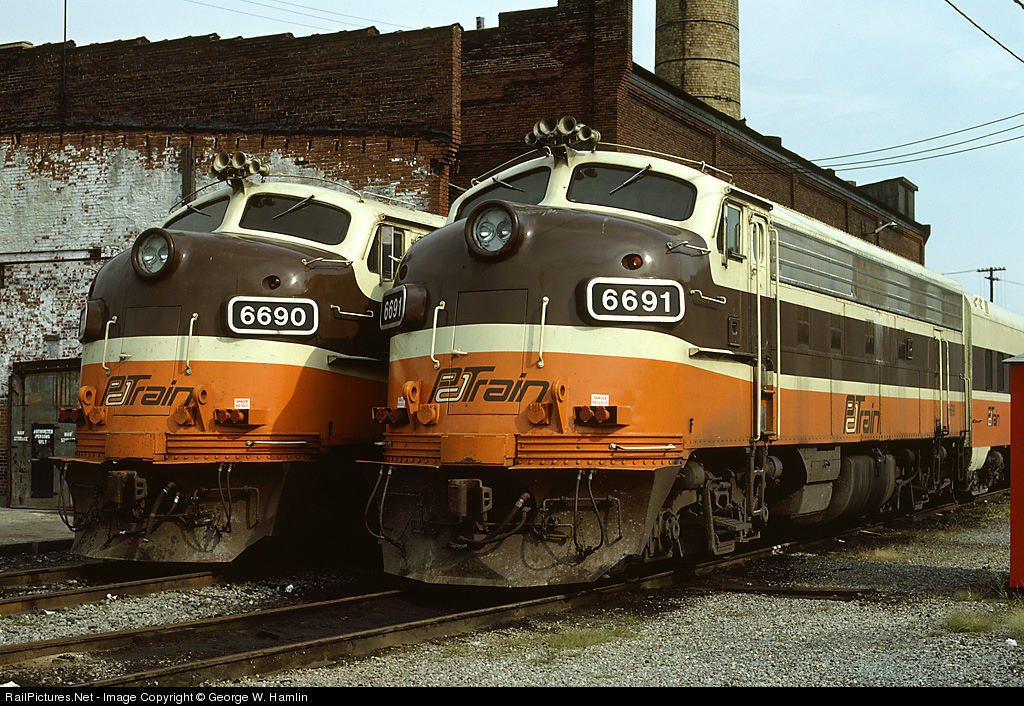Back in the late ‘60s while I was in the Air Force, I traveled occasionally by rail to visit my family back in West Virginia. I was a train nut even then and was always looking for something interesting along the route. Here are a few shots from that time, courtesy of Don Haskel:
By 1968, this is what remained of the National Limited. An E8 and single coach move eastbound through Industrial with a train renamed The West Virginian. A flag stop lay ahead at Salem, if needed. This location is about 20 miles from my boyhood home.

This is a classic scene of Train #11, the Metropolitan Special, passing westbound through Wolf Summit in 1967. This scene was about 15 miles from my home. Since my Dad worked for the Post Office, I was quite familiar with mail bags and hooks. In this photo, a mail bag awaits on the hook to be taken by the train on the move led by E8 #1441. This time honored practice would soon end. Mail transport would cease on the Metropolitan Special that year as the postal service removed it from the railroads.

This wonderful image freezes the west end of Clarksburg at Short Line Junction in winter 1967. The remnant of National Limited, now train #32 and simply called the National, enters Clarksburg for station stop. There was an odd power consist this day with a GP9 and E8 – the latter likely experiencing problems. This shot was taken about two miles from my home.

All of the track in these shots is now gone and only a fading memory. These photos invoke wonderful memories of a bygone era.
Enjoy,
Bob


